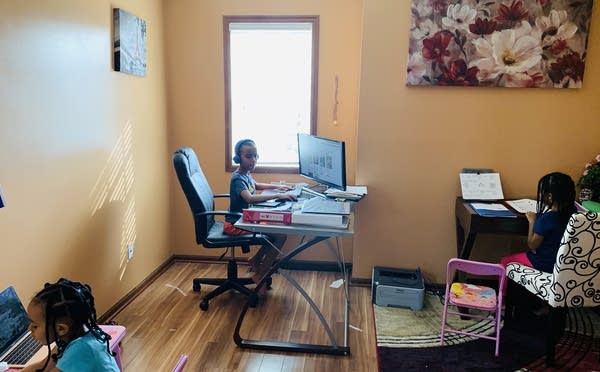Tech frustrations, inequity and silver linings: Minnesota’s first week of distance learning
Gov. Walz says schools are unlikely to reopen by the end of the academic year

Five-year-old Iman Aman, 10-year-old Imran Deksiso and 6-year-old Elham Deksiso complete schoolwork on the first day of distance learning at home. Week one of Minnesota students attempting to learn from home was punctuated by technology failures, overwhelmed parents and deepening inequities.
Courtesy of Zinet Kemal
Go Deeper.
Create an account or log in to save stories.
Like this?
Thanks for liking this story! We have added it to a list of your favorite stories.


